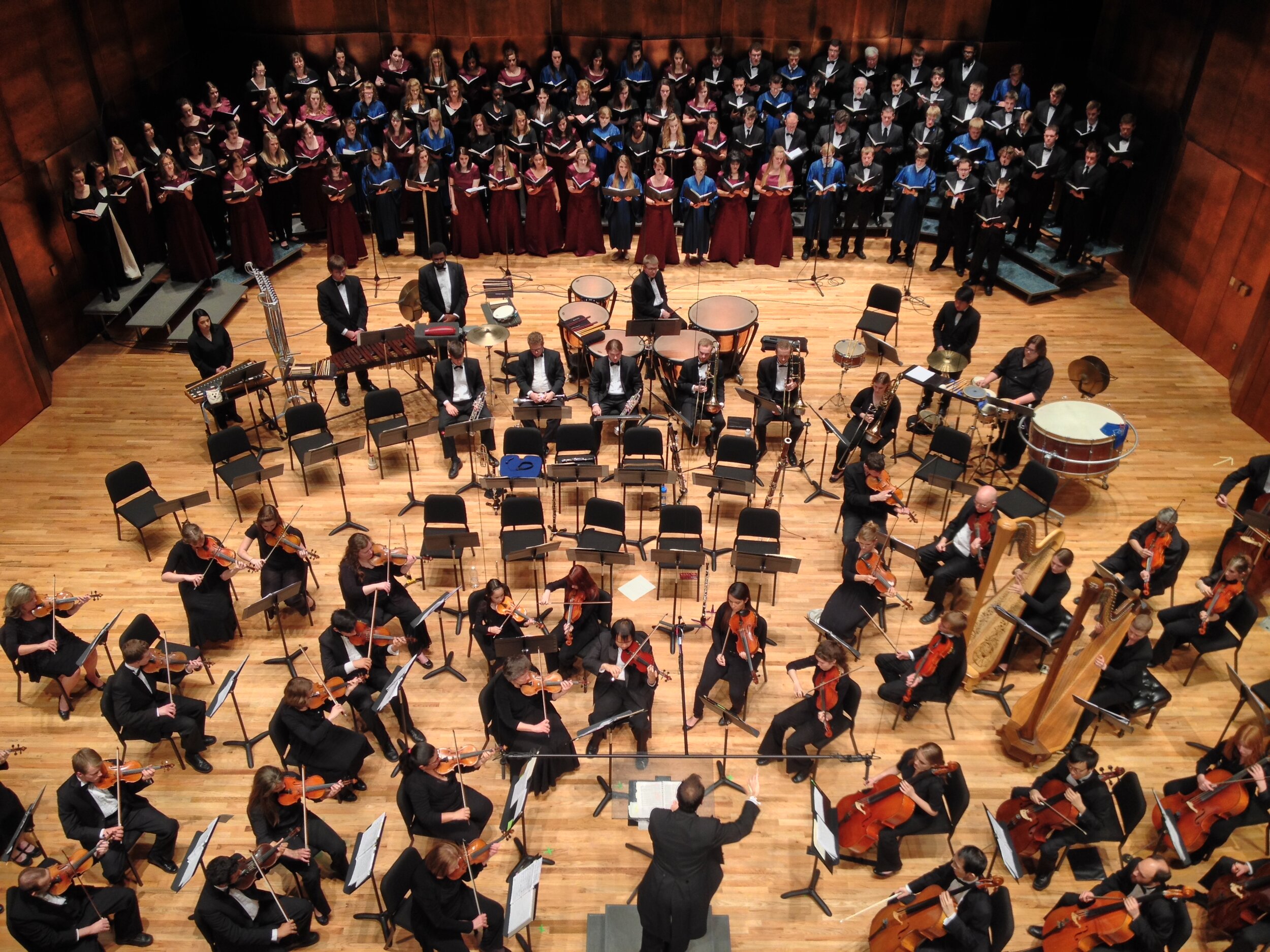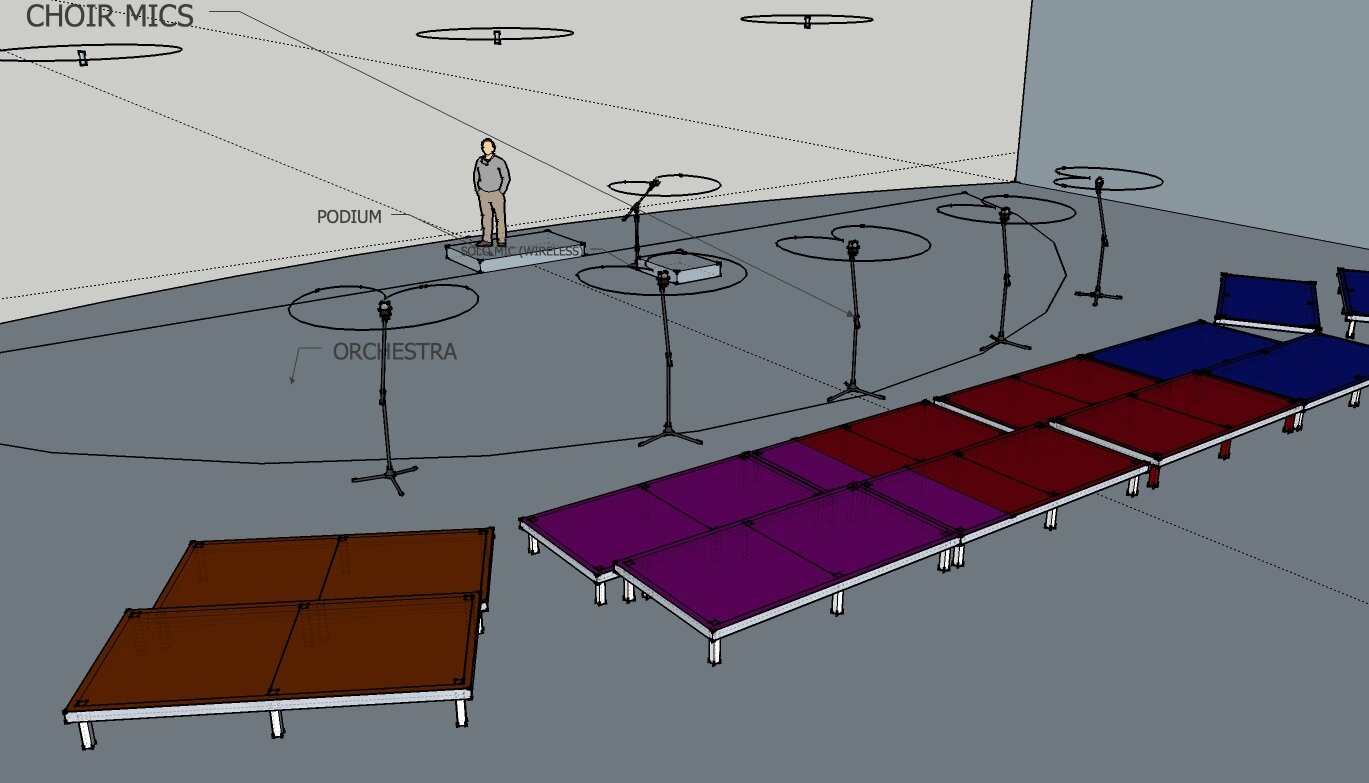When recording a choir singing a cappella or with piano accompaniment, I try to place the microphones where the direct sound of the choir blends well with the sound of the choir reverberating throughout the room. This usually means the mics are some distance (several feet) in front of the ensemble, and a few feet above the singers. This allows the sound of the ensemble to blend within itself and keeps any one voice or group of voices from sticking out.
Just listen and position the mics where things sound best - easy enough, right? But recording choir with orchestra can be tricky. The main reason is that the percussion, brass, and winds bleed in to the choir mics. Especially percussion. Even when percussion instruments are played quietly, they tend to have a very bright timbre - Think of the “tick” and “zing” of a triangle, the “shimmer” of cymbals, and the “smack” of sticks on a drum. And usually the percussion is the last row of the orchestra and very close to the choir mics. Most percussion instruments radiate sound in every direction, rather than focusing their sound towards the audience, like a trumpet or trombone (winds radiate pretty widely as well, but they don’t have as much very high frequency energy and are further away from the choir).
In recording sessions, moveable absorption like gobos can help, and in live performance, plexiglass shields can help. But if you don’t have those options, negotiate for as much space between the percussion and the choir as you can (notice the gap in the photo below), and use microphone choice and placement to try to capture as much sound from the choir and as little sound from other sources as possible.
One solution is to use cardioid condenser microphones close to the choir risers, maybe little closer to the choir than you would normally want. In the mix, these close mics will supplement the main sound, or “bloom” of the choir, captured by the main LCR omnidirectional array (see diagrams below). In fact, you might end up rolling off or shelving the high frequencies of these mics, which will reduce the sibilance and breath from the singers, and reduce the stridency of the percussion bleed.
I might usually prefer my choir mics to be higher and further from the choir, but in this case, closely placed cardioid mics with a bit of high shelving got the job done, and ended up in a natural, yet intelligible and musical sound.


